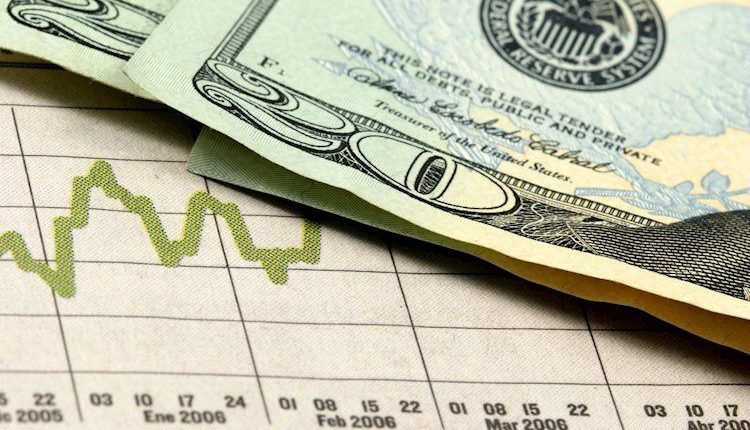- US Dollar is gaining traction, and the DXY index surged to 106.70.
- The two-day Fed meeting ends on Wednesday with a monetary policy decision.
- Mid-tier economic figures from the US came in mixed.
- US Treasury yields retreat, which may limit the USD’s momentum.
The US Dollar (USD) is up on Tuesday, with the DXY index rising to 106.70 on the back of a cautious market mood ahead of the Federal Reserve (Fed) Interest Rate Decision on Wednesday. In addition, the US reported strong Housing and Confidence data, while Chicago’s PMI from October came in lower than expected. The escalating conflict between Israel and the Hamas group also contributes to a sour market mood.
In defiance of the Federal Reserve’s (Fed) tightening measures, the United States economy showed remarkable resilience, which allowed the Greenback to gain traction. Despite this, the possibility of a 25-basis-point hike in December, as per the CME FedWatch Tool, continues to be low, limiting any upward movement of the USD. That being said, the policy statement and Fed Chair Jerome Powell’s words may provide further clues on forward guidance for investors to continue modeling their expectations for the next meeting.
Daily Digest Market Movers: US Dollar gained traction amid positive Housing and Confidence data, eyes on Fed
- The US DXY Index jumped to 106.70, after bottoming at a daily low below 106.00.
- The US Conference Board Consumer Confidence Index from October beat expectations, coming in at 102.6 vs the 100.5 expected.
- The S&P Dow Jones Indices reported that the S&P/Case-Shiller Home Price from August exceeded expectations. It came in at 2.2% YoY vs the expected 1.6% and increased in relation to its last reading of 0.2%.
- On the negative side, the Chicago PMI from October came in at 44, below the expected 45 consensus and declined from its previous reading of 44.1.
- Meanwhile, US government bond yields are mixed with the 2, 5 and 10-year yields standing at 5.07%,4.81% and 4.86%, respectively, which could limit the USD’s momentum.
- For Wednesday, according to the CME FedWatch Tool, a pause in November is nearly priced in, while the odds of a 25-basis-point hike in December are still low near 20%.
Technical Analysis: US Dollar Index jumps back above 20-day SMA, momentum still limited
According to the daily chart, the technical outlook for the DXY Index remains neutral to bearish as the bulls show signs of exhaustion. The Relative Strength Index (RSI) points toward a potential reversal, as its positive slope above the midline weakens, while the Moving Average Convergence Divergence (MACD) histogram presents red bars.
As long as the index remains above the 20, 100 and 200-day Simple Moving Averages (SMAs), the outlook on the broader scale will favour bulls, but buyers will probably have a hard time defending the 20-day SMA as momentum weakens.
Supports: 106.30 (20-day SMA), 106.00, 105.70.
Resistances: 106.80, 107.00, 107.30.
Risk sentiment FAQs
In the world of financial jargon the two widely used terms “risk-on” and “risk off” refer to the level of risk that investors are willing to stomach during the period referenced. In a “risk-on” market, investors are optimistic about the future and more willing to buy risky assets. In a “risk-off” market investors start to ‘play it safe’ because they are worried about the future, and therefore buy less risky assets that are more certain of bringing a return, even if it is relatively modest.
Typically, during periods of “risk-on”, stock markets will rise, most commodities – except Gold – will also gain in value, since they benefit from a positive growth outlook. The currencies of nations that are heavy commodity exporters strengthen because of increased demand, and Cryptocurrencies rise. In a “risk-off” market, Bonds go up – especially major government Bonds – Gold shines, and safe-haven currencies such as the Japanese Yen, Swiss Franc and US Dollar all benefit.
The Australian Dollar (AUD), the Canadian Dollar (CAD), the New Zealand Dollar (NZD) and minor FX like the Ruble (RUB) and the South African Rand (ZAR), all tend to rise in markets that are “risk-on”. This is because the economies of these currencies are heavily reliant on commodity exports for growth, and commodities tend to rise in price during risk-on periods. This is because investors foresee greater demand for raw materials in the future due to heightened economic activity.
The major currencies that tend to rise during periods of “risk-off” are the US Dollar (USD), the Japanese Yen (JPY) and the Swiss Franc (CHF). The US Dollar, because it is the world’s reserve currency, and because in times of crisis investors buy US government debt, which is seen as safe because the largest economy in the world is unlikely to default. The Yen, from increased demand for Japanese government bonds, because a high proportion are held by domestic investors who are unlikely to dump them – even in a crisis. The Swiss Franc, because strict Swiss banking laws offer investors enhanced capital protection.
Read the full article here

